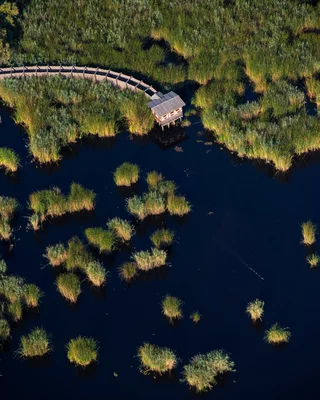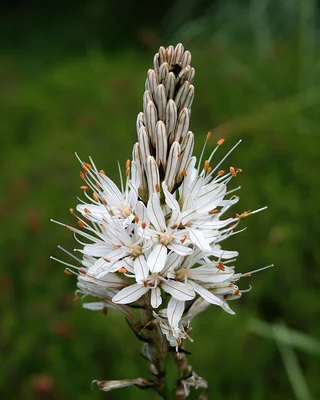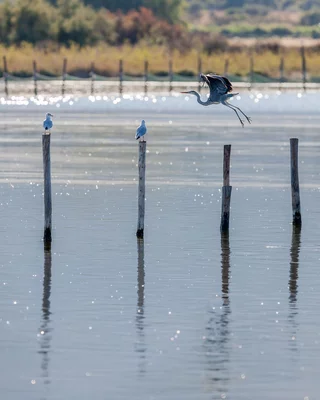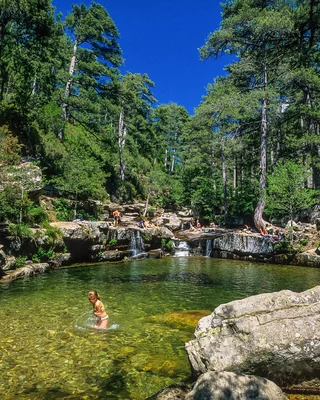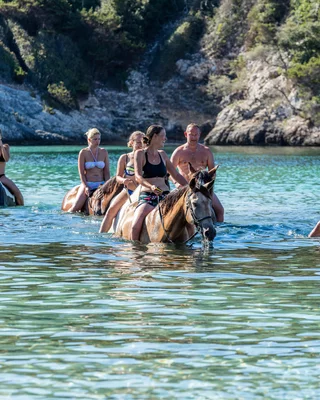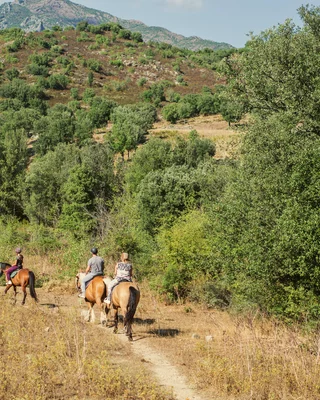Corsica: a bird paradise

Are you passionate about ornithology? Do you love to admire the marvelous flight and ballet of birds in the sky? Then Corsica is the place for you! The Isle of Beauty lends itself wonderfully to birdwatching, many of which are endemic and emblematic of Corsica. Come and discover an exceptional land, between sea and mountains, for an extraordinary vacation in contact with nature.
Ornithology in Corsica: what you need to know
Corsica is a paradise for nature lovers and birdwatchers alike. Boasting an extremely rich and diverse flora and fauna, Corsica is home to numerous bird species, including France's only endemic species: the Corsican nuthatch. Birds of prey can also be found in the island's high, unspoilt mountains.
But whether on the coast, in the wetlands or in the arid zones of the island, it's always possible to observe birds whose way of life is adapted to these different environments.
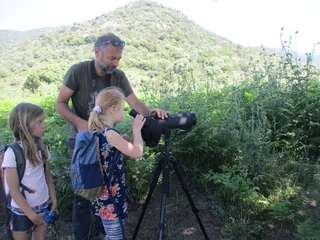
Learn the names of Corsica's birds
The Little Bee-eater
Its colors are no match for those of the rainbow: a small bird dressed in red, orange, yellow, green, blue and black, it's easy to spot in the scrubland. It arrives in May and leaves in August, having devoured the wasps, bumblebees and bees of the Isle of Beauty. He usually sleeps in and then goes off to feed his young.
Song of the Corsican nuthatch (a picchjarina)
First recorded in 1883 by an English naturalist, this emblematic Corsican bird arrived 1,000 years ago. It is a passerine, gray on the back and white on the belly, measuring around 10 cm. To spot it, you'll need to look up at the top of an old larch pine, as it feeds exclusively on pine seeds. You won't find it anywhere else but in Corsica, where only 2,000 are currently counted. The preservation of this vulnerable bird is a real challenge for Corsicans.
Photos of the pink flamingo
They live in colonies and arrive in Corsica to take advantage of its mild climate. You'll never tire of observing them on walks, while eating, or at take-off, trying to take THE photo of your vacation. It's the star of the Biguglia pond with its 400 members, but you can also see them in the Diana pond and in Porto-Vecchio. They make their home in Corsica in autumn and winter to delight the eye!
The osprey (l'alpana), the night bird
It's so named because it feeds exclusively on fish, and if you go out to sea, you may be lucky enough to see the spectacle: a 190m diurnal bird of prey swooping for 20 meters to catch its food. Motorboat traffic too close to the coast disturbs the birds during their breeding season: frightened males and females stress their chicks, preventing them from flying.
The bearded vulture - the largest bird of prey
Weighing in at an impressive 6 kg and with a wingspan of 2.80 m, this is one of Europe's largest vultures. You may see it feasting on a carcass or rodent in the mountain ranges, hidden in the rock faces of islands between 600 and 2200 m. Among the 30 bird species threatened with extinction, the bearded vulture is on the red list of critically endangered species.
Protection: a challenge
To raise awareness of the diversity, beauty and fragility of the animal world, two passionate photographers, David GAUTIER and René ROGER, created the Oiseaux de Corse association, whose aim is to use images to raise awareness of nature conservation among schoolchildren and the general public. Conferences are organized to inform the public and warn them of the slow disappearance of certain birds.
For over 20 years, the Réserve naturelle de l'étang de Biguglia has been working to protect over 250 bird species and 450 plant species.
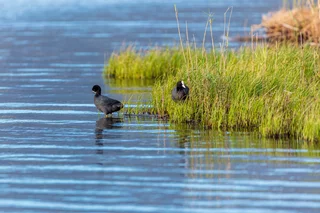
What birds of prey can be found in Corsica?
There are many birdwatching sites, and if you want to keep an eye out for birds, simply observe around you! Here are just a few of the interesting and far from exhaustive birdwatching possibilities:
A summer in flight
In the Propriano region, head for the Plaine de Tavaria, near Portigliolo and the mouth of the Rizzanese. You'll be able to spot bee-eaters, warblers, cisticolas, common starlings, red kites, Sardinian warblers, shrikes (red-backed and red-headed), the Corsican Venturon... Don't hesitate to take a short hike to the Col de Bavella to see the Corsican Nuthatch and perhaps the Bearded Vulture, for example, by following the GR20 southwards.
To see Bearded Vultures, just go to the highest points above 2000 meters. The Asco valley (between the village and the old ski resort) is recommended, but the Niolu sector (around the Calacuccia dam) is also interesting. The best observation periods are from October to December, but they can also be seen all year round.
Off to sea
Fancy a trip to the south of the island? Head for Bonifacio. The cliffs here are home to rock pigeons, bluebirds, ravens and soulcie sparrows, joined in summer by swifts, swallows and peregrine falcons... Audouin's gulls can sometimes be seen in the Bouches de Bonifacio. The shearwater, a seabird, is also present in the Bonifacio area, as is the crested cormorant.
Near Ajaccio, don't hesitate to ask about the opening of the mouths of the Gravona and Prunelli rivers, just south of the airport. The site is much richer in spring, as it is at sea in the Gulf. On foot or by bike, you can also visit the Pointe de la Parata (opposite the Sanguinaires islands, west of Ajaccio), where you'll be able to observe, among other things, crested cormorants.
As for ospreys, you can see them everywhere in the Scandola Nature Reserve. This reserve is only accessible by boat in summer. Ospreys are at their nesting sites from early March to late July/early August. Boat trips take you around the Scandola reserve from Porto or Calvi, or you can observe them all along the seafront road between Calvi and Porto (e.g. Revellata, Capo Cavallo, Partinello), though you should of course avoid approaching the nests, which are difficult to do as they are on rocky outcrops.
It should be noted that passage species are relatively unimportant in Corsica. Most migratory birds prefer to bypass the Mediterranean via Spain or the Middle East, rather than using the Corsica-Sardinia-Sicily bridge.
Would you like to discover Corsica "as the birds say" ? One of our advisors will be happy to design a tailor-made tour to suit your needs and budget! An ornithological holiday to discover and appreciate Corsica's flora and fauna, while enjoying a wonderful vacation. Whether you come in the post-season or off-season, Corsicatours' good deals will help you find the ideal accommodation at affordable prices and not far from your birdwatching sites.
